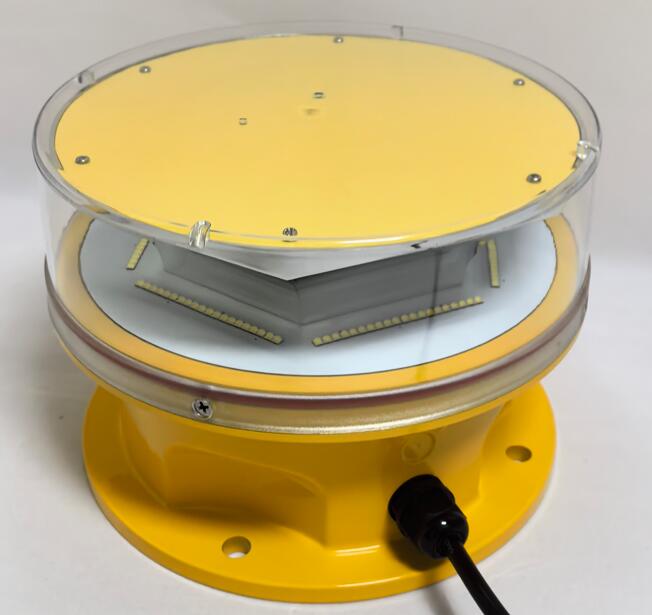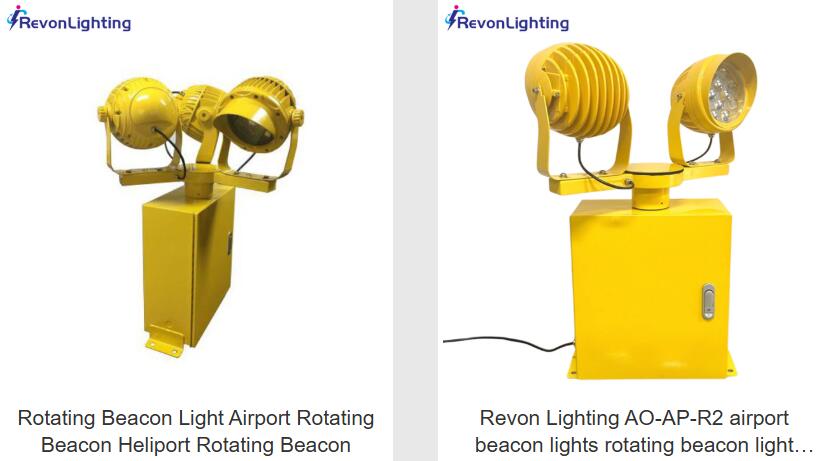In the vast expanse of the aviation world, where safety and precision are paramount, aviation beacon lights serve as silent yet vital sentinels. These powerful light sources act as visual markers, guiding pilots through darkness and adverse weather conditions while preventing catastrophic collisions. This article explores the essential functions, evolving technologies, and stringent regulations surrounding aviation beacon lights, demonstrating why they remain indispensable in modern air navigation.
The Fundamental Purpose of Aviation Beacon Lights
Aviation beacon lights perform several critical functions in air traffic management:
Obstacle Identification: They mark tall structures like communication towers, wind turbines, and skyscrapers to prevent mid-air collisions.

Airport Recognition: Rotating beacons help pilots locate airports from miles away, especially at night or in poor visibility.
Runway Safety: Synchronized with other lighting systems, they enhance situational awareness during takeoff and landing.
Without these beacons, pilots would face significantly higher risks when navigating through congested airspace or near hazardous terrain.
Types of Aviation Beacon Lights
Different environments and structures require specialized beacon configurations:
Classic design with a motorized rotating reflector

Produces an omnidirectional flashing pattern
Commonly used at airports and on control towers
2. LED Strobe Beacon Lights
Modern, energy-efficient alternative to traditional bulbs
| Aviation Beacon Lights |
Extremely bright flashes with precise timing
Longer lifespan and lower maintenance requirements
3. Dual-Color Beacon Systems
Combine red and white lights for different warning levels
Red for stationary obstacles, white for moving aircraft
Used in helipads and offshore platforms
4. Solar-Powered Aviation Beacons
Self-sufficient systems for remote locations
Ideal for mountainous terrain or offshore wind farms
Environmentally friendly with minimal infrastructure needs
Technological Evolution in Beacon Lighting
Recent advancements have transformed aviation beacon light systems:
Smart Monitoring: Integrated sensors detect failures and automatically alert maintenance crews
Adaptive Intensity: Automatic brightness adjustment based on ambient light conditions
Wireless Synchronization: Multiple beacons can be coordinated without physical wiring
Advanced Materials: Corrosion-resistant housings for harsh marine environments
These innovations ensure beacon lights remain reliable while reducing operational costs and environmental impact.
International Standards and Regulations
Global aviation authorities maintain strict guidelines for aviation beacon light systems:
ICAO Annex 14: Specifies light intensity, flash rates, and color standards
FAA AC 150/5345-43: Details performance requirements for obstruction lighting
EASA CS-ADR-DSN: European standards for aerodrome warning systems
Key compliance factors include:
Minimum visibility range (typically 3-10 nautical miles)
Flash frequency (20-60 flashes per minute)
Color consistency (red, white, or dual-color systems)
Weather resistance (operational in extreme temperatures)
Emerging Challenges and Solutions
While beacon technology has advanced significantly, new challenges continue to emerge:
Light Pollution Mitigation: Developing directional lighting to reduce skyglow
Energy Efficiency: Improving power consumption without compromising brightness
Wildlife Impact: Modifying flash patterns to minimize effects on migratory birds
Cybersecurity: Protecting networked beacon systems from digital threats
Future developments may include:
AI-Powered Predictive Maintenance
Integration with Urban Air Mobility Systems
Biomimicry-Inspired Flashing Patterns
Aviation beacon lights represent far more than simple warning devices - they are sophisticated safety systems that have evolved alongside aviation itself. From the early gas-fired beacons to today's smart LED systems, these lights continue to prevent accidents and save lives. As airspace becomes increasingly crowded with traditional aircraft, drones, and urban air taxis, the role of aviation beacon lights will only grow in importance. Their silent flashes in the night sky remain a testament to human ingenuity in the pursuit of safer skies for all.